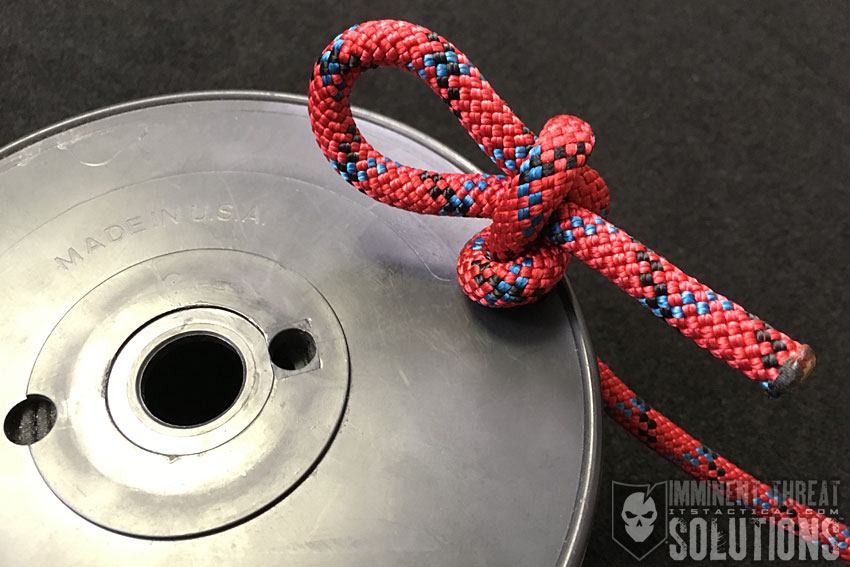

We’re kicking off this week’s Knot of the Week with a look at four different Stopper Knots. Traditionally, Stopper Knots serve two core purposes. The first being to prevent a frayed rope from continuing on its path to unraveling and the second is to prevent rope from passing through a hole.
We’ll look at both of these purposes today and discuss Overhand Knots, Slipped Overhand Knots, Figure-Eight Knots and Slipped Figure Eight Knots. Each makes a good Stopper Knot, but the Figure Eight is superior to the Overhand in my opinion. Adding the slipped variations to these will help when untying them if they’ve been put under load.
(Strength: 1/Secure: 5/Stability: 1/Difficulty: 1) See below for what these ratings mean.
(Strength: 3/Secure: 2/Stability: 1/Difficulty: 1) See below for what these ratings mean.
(Strength: 4/Secure: 4/Stability: 3/Difficulty: 1) See below for what these ratings mean.
(Strength: 3/Secure: 3/Stability: 3/Difficulty: 1) See below for what these ratings mean.
Strength/Security/Stability/Difficulty
Each knot will be assigned a rating from 1-5 (1 representing the lowest score) based on the following four properties:
Strength – All knots will weaken the strength of a rope, however, there are knots that are stronger than others. The scale here will reflect how strong the rope remains with the specified knot.
Security – The security scale refers to how well the knot will stay tied, and resist coming loose under a normal load.
Stability – Stability refers to how easily the knot will come untied under an abnormal load (i.e. the knot being pulled in a direction it was not intended to) A lower score here represents instability.
Difficulty – The lower the number, the easier a knot is to tie.

Do you enjoy witty banter and nostalgic geekdom all while sipping on a fine aged scotch? Then you’ll love our podcast!

Shop the ITS Store for exclusive merchandise, equipment and hard to find tactical gear.

Discussion